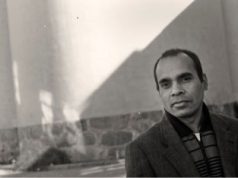 By Vimal Kapoor
By Vimal Kapoor
In the history of Indian cricket, few moments rival the awesome day of 2 November 2025, when the Indian women’s team etched their names into eternity. Lifting the ICC Women’s ODI World Cup trophy for the first time, defeating South Africa in a pulsating final at Mumbai, they didn’t just win a title—they shattered the general feeling that Indian women cannot win an ICC title. This victory capped a tournament run that saw them topple giants, including a stunning semifinal upset over Australia. For a nation where cricket is religion, these women have become its high priestesses, proving that resilience and skill know no gender.
The story of Indian women’s cricket is one of improbable beginnings, nurtured in the shadows of a male-dominated sport. It all started in early seventies when initial stars such as Diana Edulji and Shanta Rangaswamy emerged from early grassroots battles. International recognition came later. India played their first Test against West Indies, a loss but a landmark. By late seventies, the WCAI joined the International Women’s Cricket Council, earning the government nod soon after. Yet progress was stunted; women’s cricket languished without BCCI backing until the turn of the century when the association merged with the board. This infusion of resources – better pay, infrastructure, and visibility -ignited a surge. The 2018 Asia Cup win offered solace, yet the quest for a global crown remained. Domestic leagues like the Women’s T20 Challenge and, crucially, the 2023-launched Women’s Premier League, professionalised the game, blending talent pools and drawing corporate investment. Today, with equal match fees to men and packed stadiums, women’s cricket in India isn’t a sideshow—it’s a spectacle.
The 2025 World Cup, hosted across India and Sri Lanka from 30 September to 2 November, amplified this evolution. As hosts, India entered with sky-high expectations, their squad a blend of youth under Captain Harmanpreet Kaur. Smriti Mandhana, the elegant opener and vice-captain, anchored the top order with a tournament haul including a century against New Zealand and fifties versus Australia and England. Shafali Verma, the teenage prodigy turned seasoned aggressor, brought explosive intent, while all-rounder Deepti Sharma’s spin wizardry and lower-order cameos proved invaluable. The campaign wasn’t flawless—early wobbles against England tested resolve—but each setback honed their determination.
The semifinal at Mumbai was a cracker of a match. Australia, seven-time champions with an unbeaten streak since 2022, posted a mammoth 338. Chasing 339—the highest target in women’s ODI history—seemed out of bounds. Yet India scripted magic. Openers Mandhana and Verma fell cheaply, but Jemimah Rodrigues and Harmanpreet Kaur scripted an astonishing win. Rodrigues, the local Mumbai girl playing before adoring home fans, unfurled an unbeaten 127 off 134 balls—her maiden World Cup ton—laced with calculated risks and unflappable poise. Harmanpreet, the captain, blazed 89, her aggressive sweeps and lofts dismantling Australia’s grip. Amanjot Kaur’s quickfire cameo sealed the five-wicket win with nine balls spare, ending Australia’s 15-match World Cup reign and marking the first 300-plus chase in a knockout. “We played with heart,” Rodrigues said post-match, her words echoing a nation’s sentiments. This wasn’t luck; it was legacy in motion.
The final against South Africa, delayed two hours by rain, pitted two maiden-title seekers. South Africa, runners-up in three straight ICC finals, won the toss and bowled. India, batting first, raced to 298/7 in 50 overs. Shafali Verma’s blistering 87 set the tone, her pulls and drives punishing loose balls. Mandhana added poise, while Rodrigues and Harmanpreet chipped in with good contributions.
South Africa started on the right note, Laura Wolvaardt—the tournament’s run queen smashed a defiant century, the first by a captain in a Women’s World Cup final. But Deepti Sharma, the Player of the Tournament, struck back. Her left-arm spin worked magic, including Wolvaardt’s prized scalp via a juggling catch from Amanjot Kaur at deep midwicket. As Harmanpreet pouched the final catch off Deepti, the stadium erupted; tears flowed, hugs lingered. “We’ve crossed the line we’ve dreamed of,” beamed Kaur, the oldest Captain to win the title.
This triumph—India’s first Women’s ODI World Cup, ending Australia’s six-title dominance—ushers in a golden era, with players like Rodrigues and Verma now crorepatis. Viewership matched the 2024 Men’s T20 final, signaling cultural shift. From rural India’s dusty fields to global glory, these women have rewritten narratives. Well done.
(Vimal Kapoor, a Dehradun resident, is passionate about literature, creative writing, cricket and exploration through travel)






